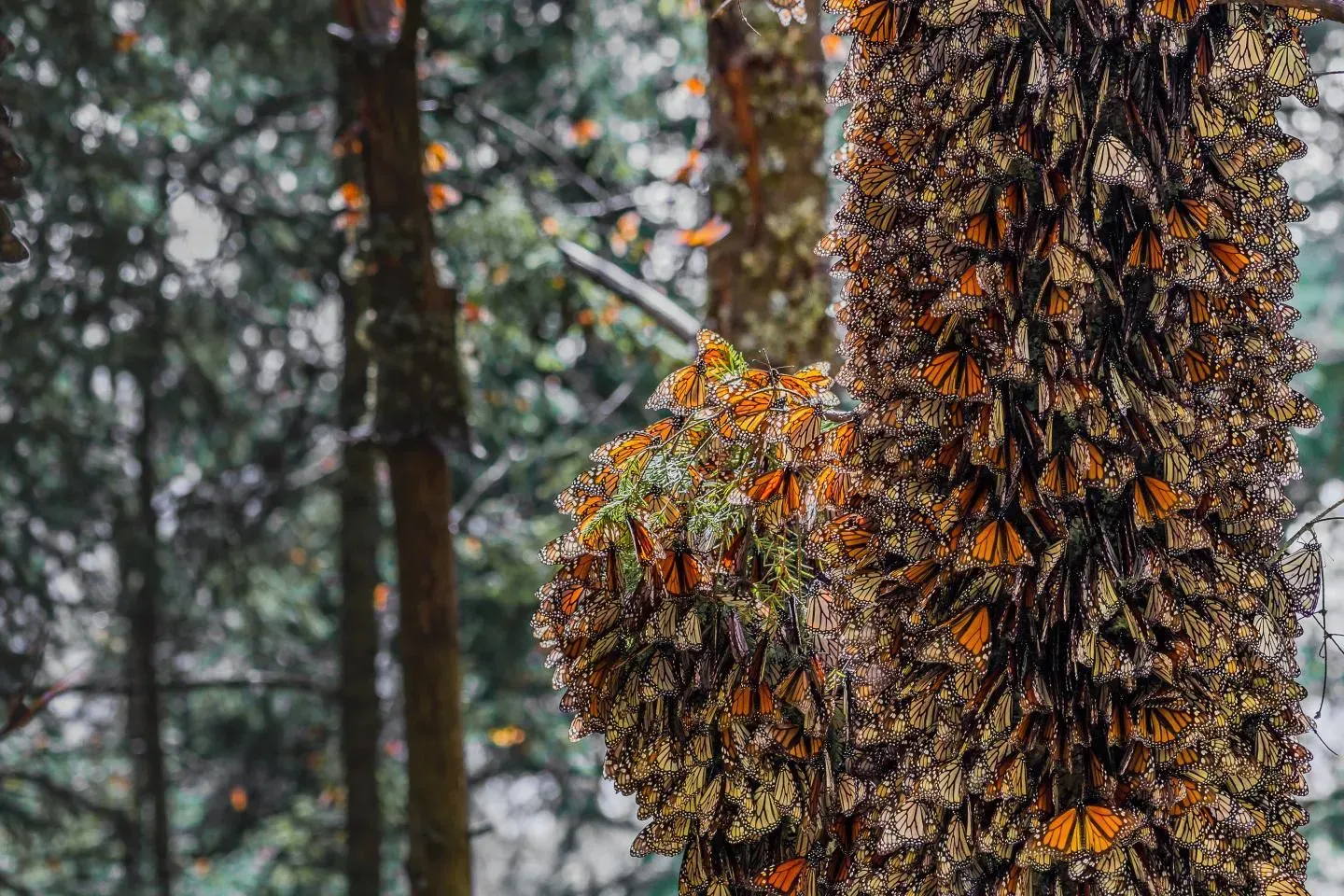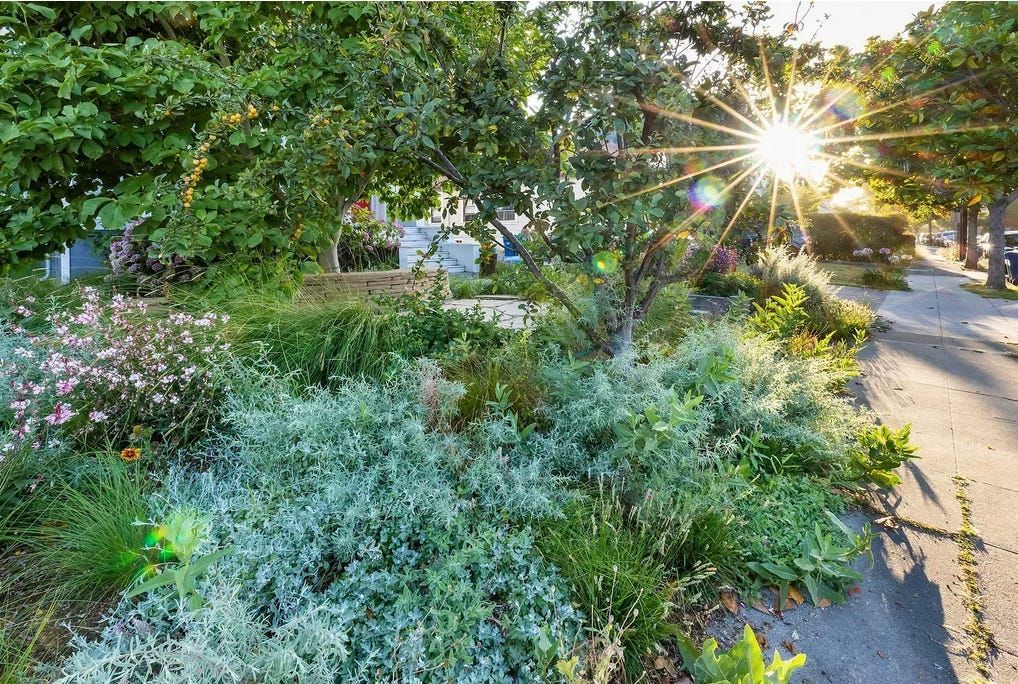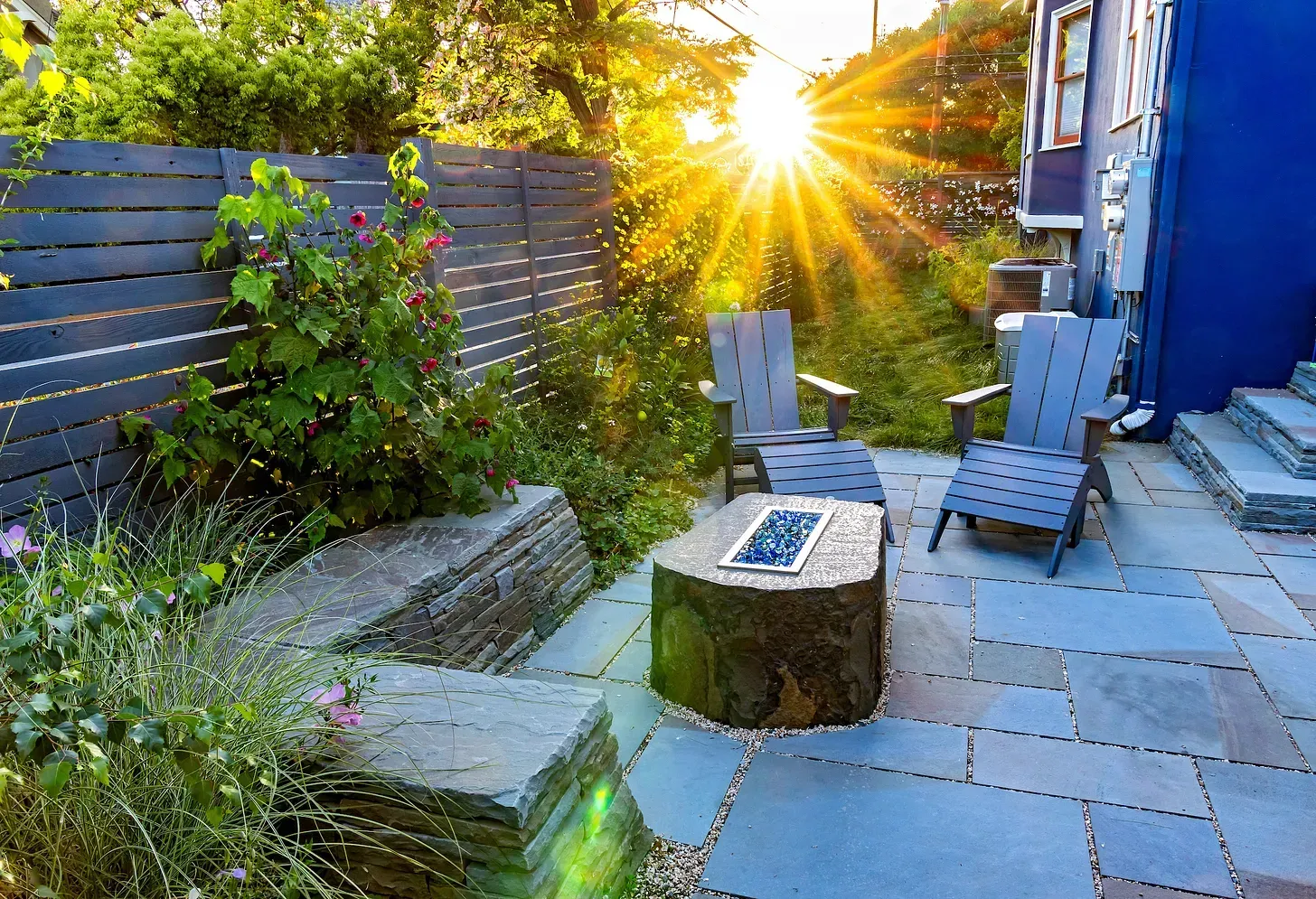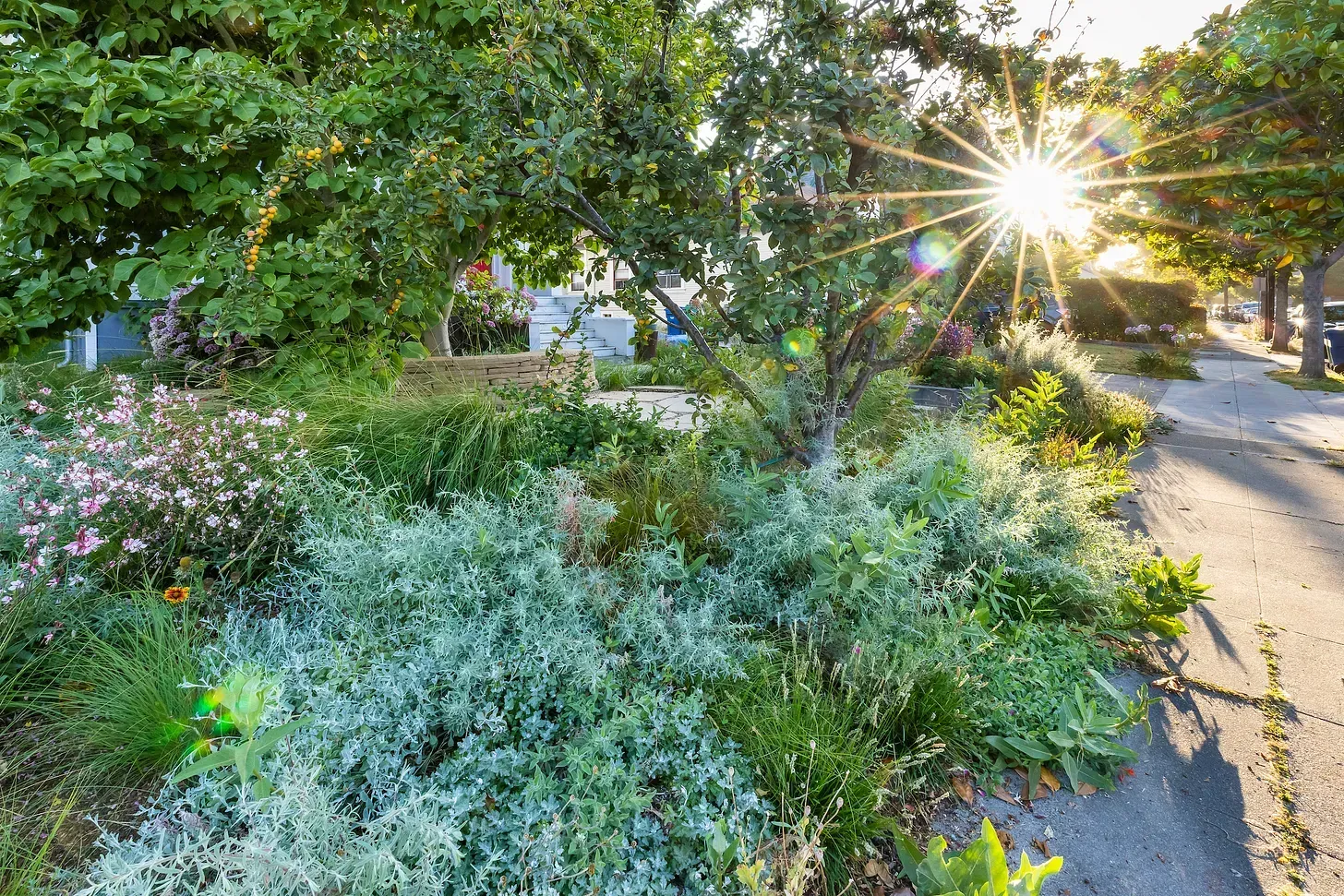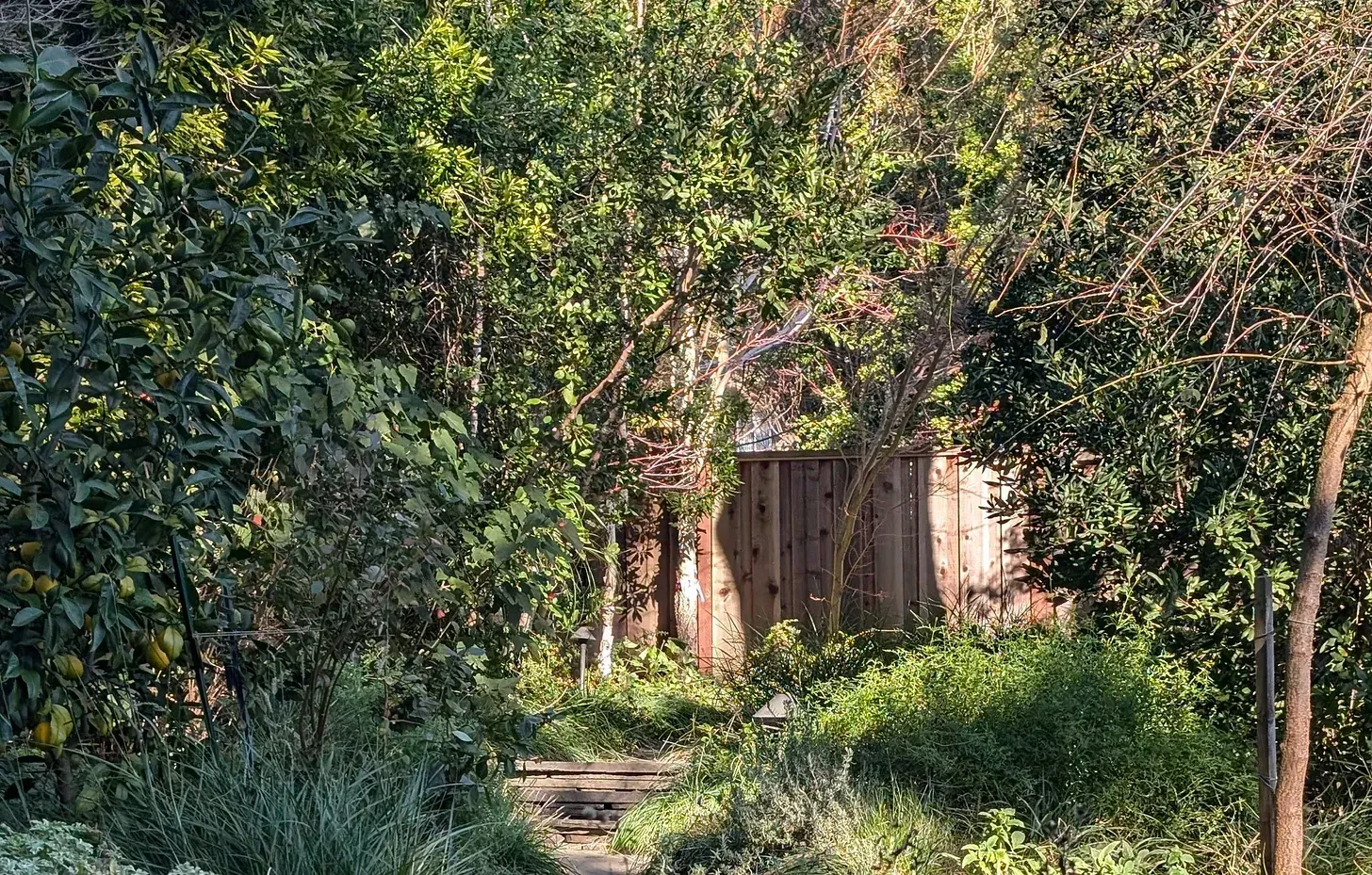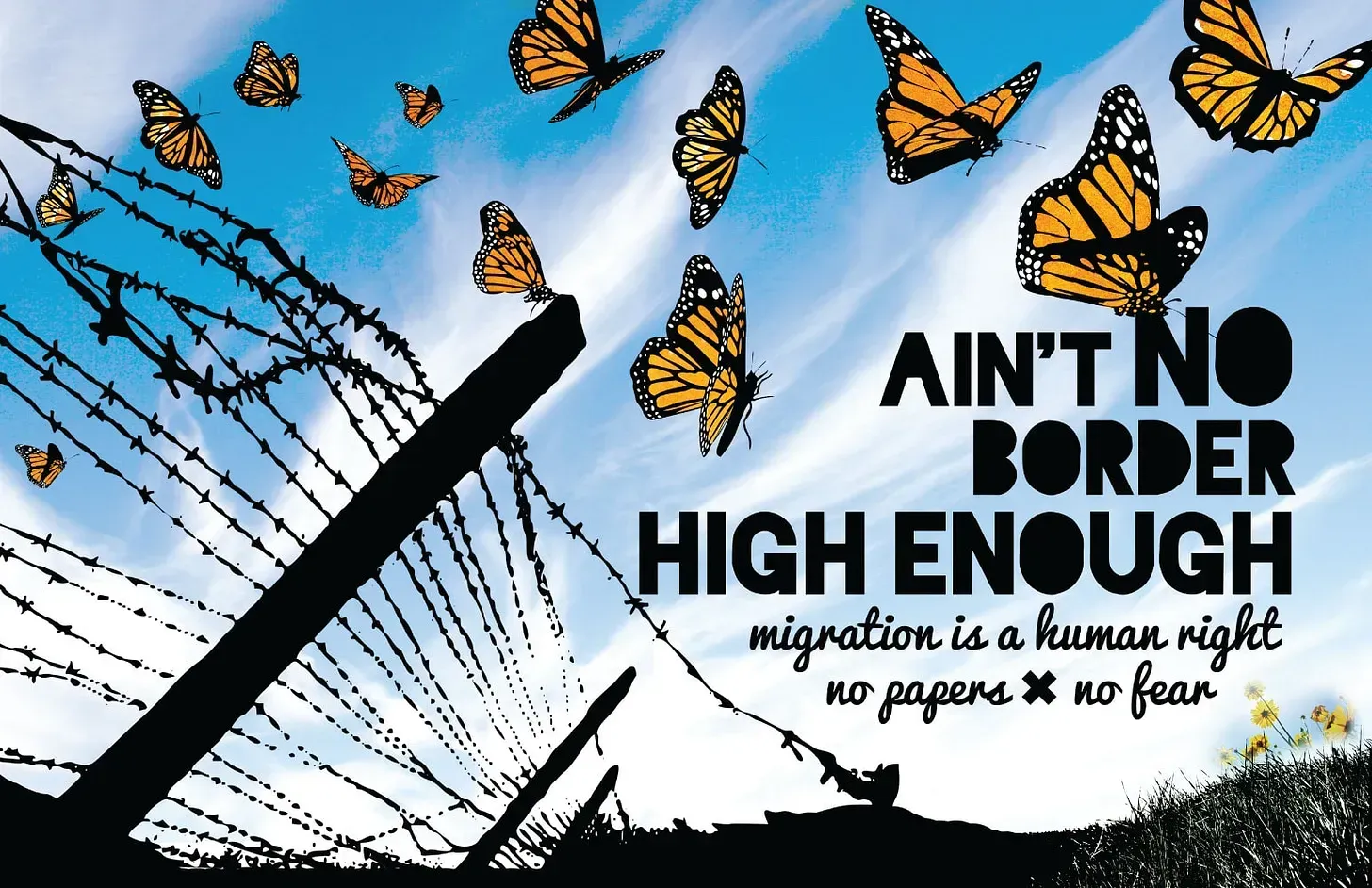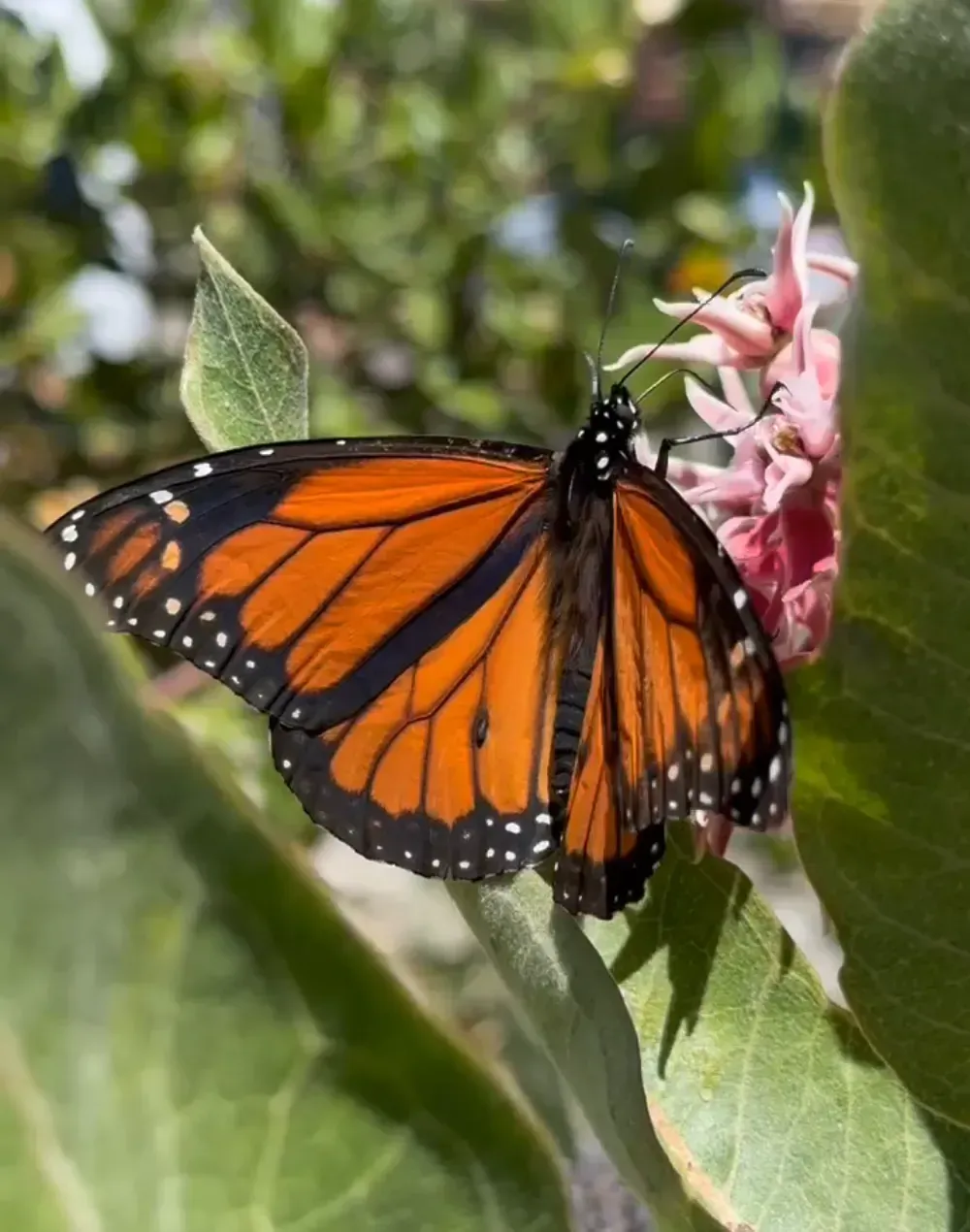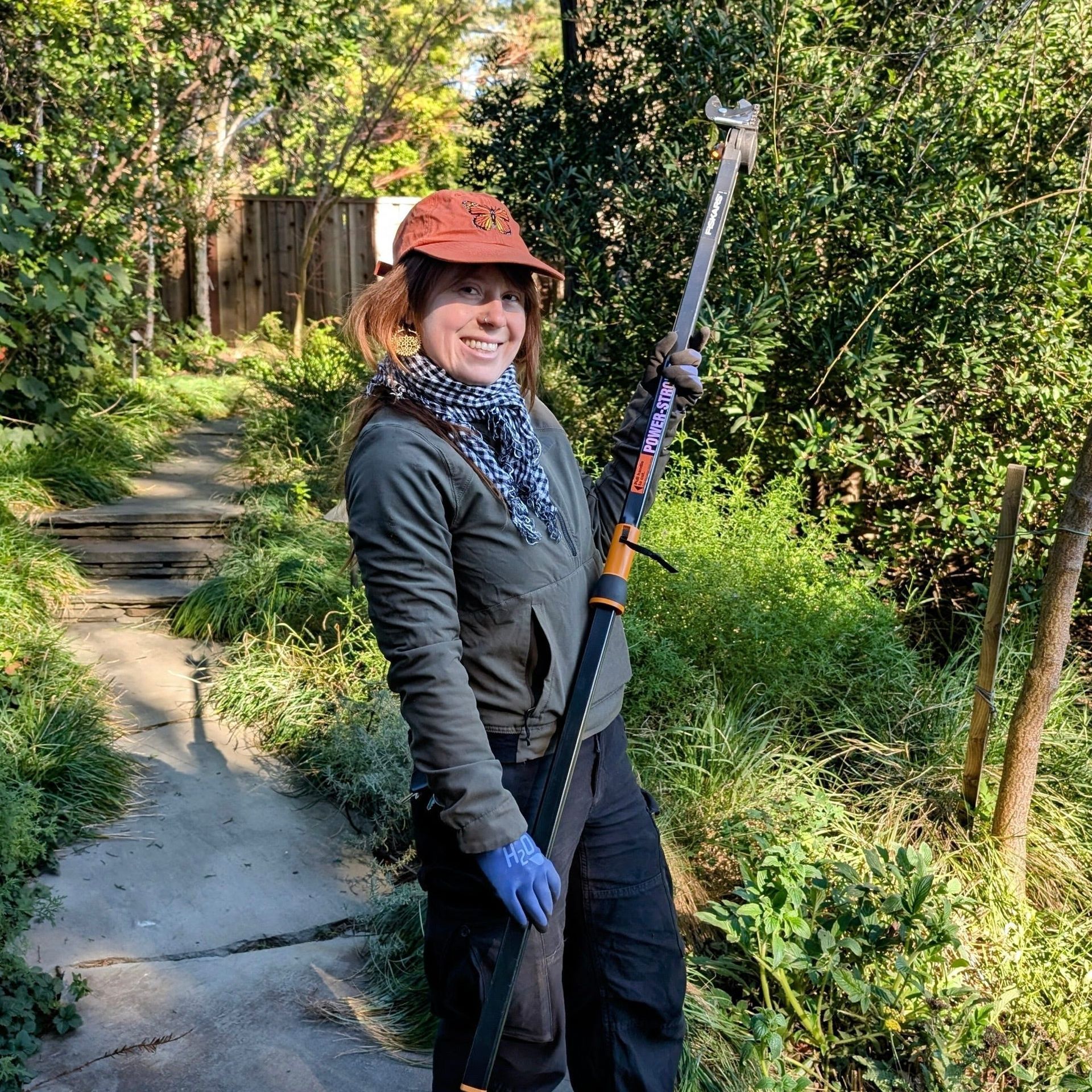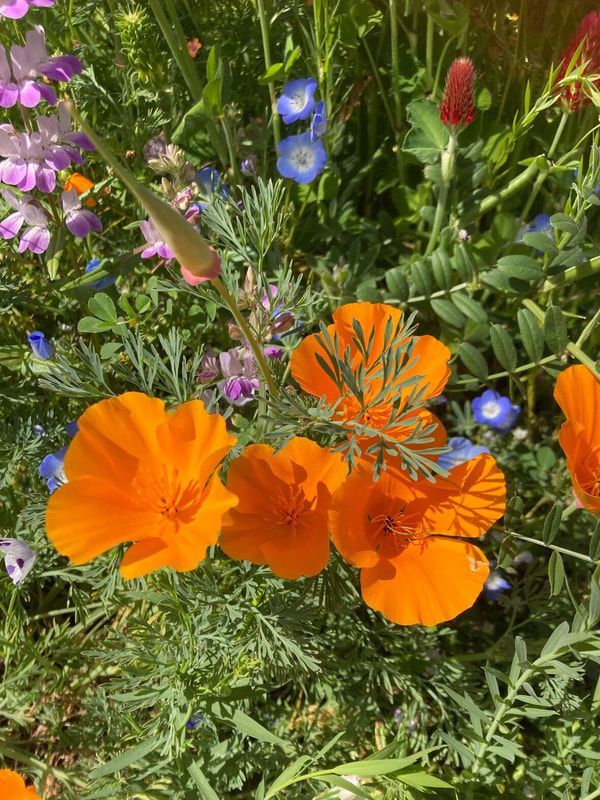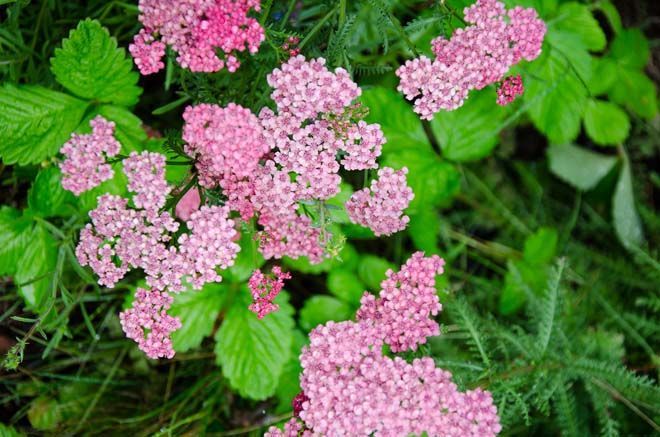THE ELEGANCE OF BUTTERFLIES
The inspiration behind butterflies and facts about their decline.
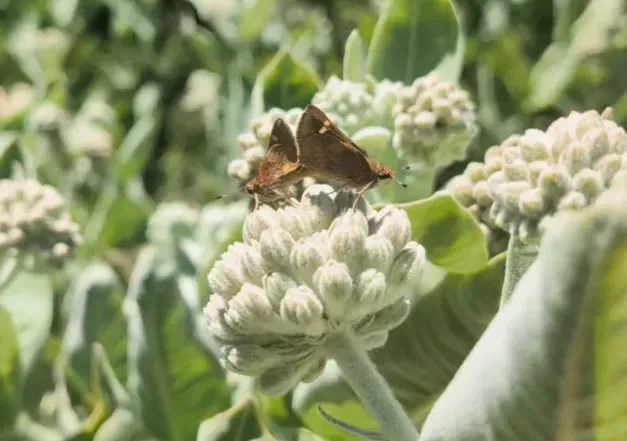
No matter where we come from or what we believe, we can all agree on one thing: butterflies are beautiful. Butterflies are the symbol of transformation. Their life journey from caterpillar to chrysalis to butterfly is one of nature’s most astonishing acts. Did you know that once inside the chrysalis, the caterpillar literally turns into a liquid form? Their transformation is so complete that the caterpillar and the butterfly appear as two different beings, yet they are one. This reminds us that growth, while challenging, leads to strength and beauty. We view our work in the same way: helping landscapes and communities move toward healthier, more resilient, and beautiful futures. Caterpillars are the larval stage of the eventual emergence of a butterfly.
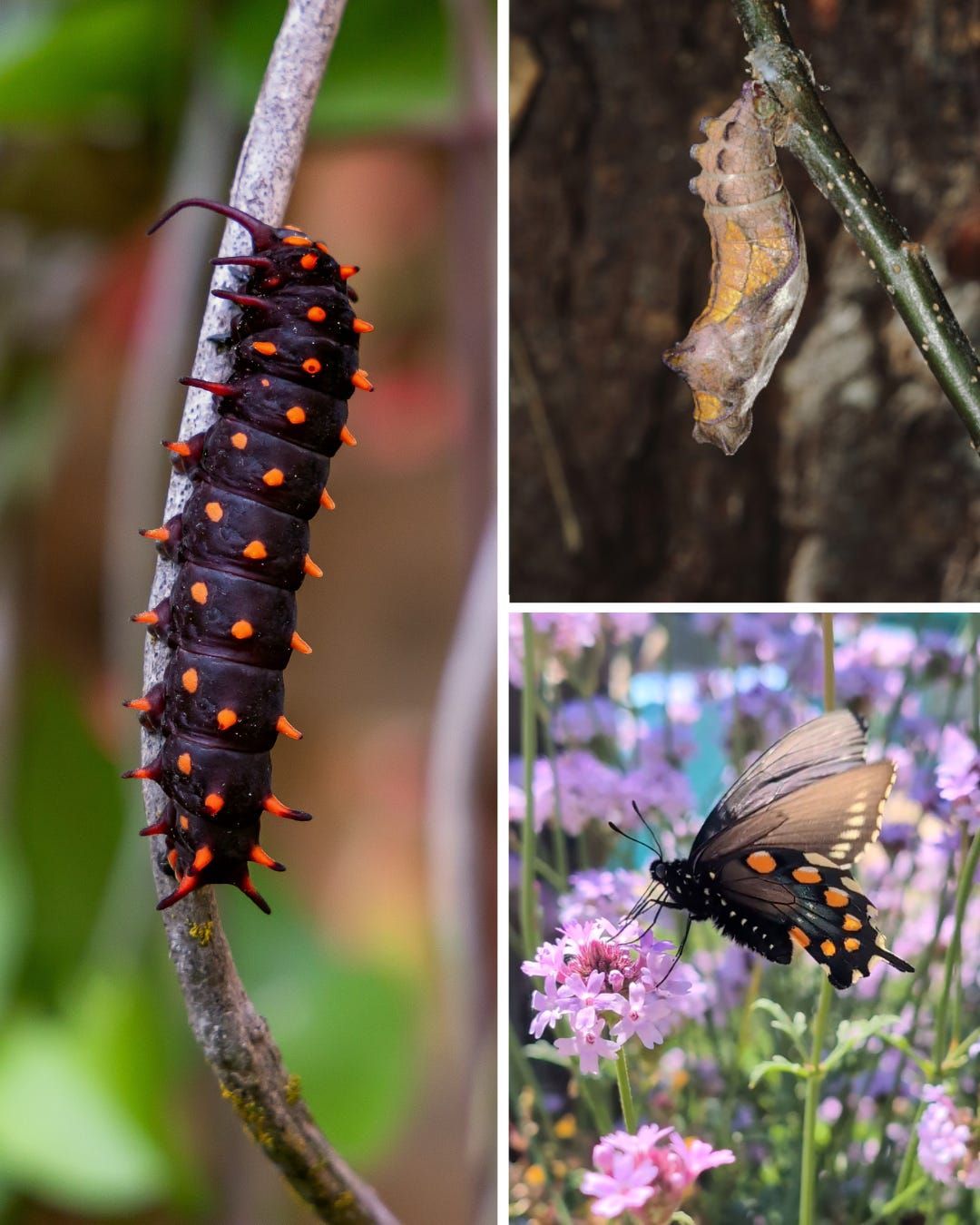
It is no wonder that the butterfly holds such powerful symbolism and a special place in the heart of humanity. Their beauty and grace remind us of the significance of transformation and resilience. They delight us with their rainbow of colors and their endlessly intriguing wing patterns. Their flight is both delicate and purposeful. Our work is inspired by the balance of beauty and resilience found in a butterfly.
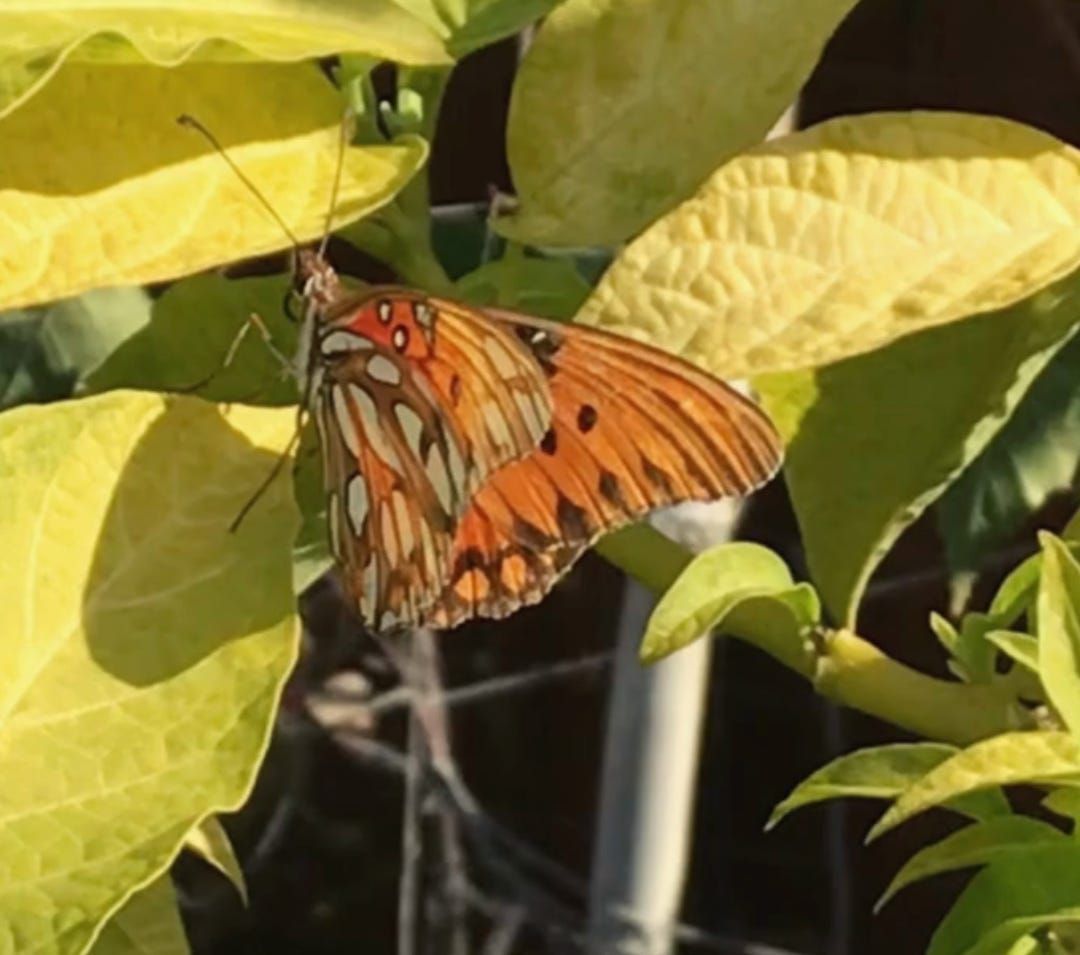
Butterflies are key to their ecosystems
Not only are they amazing creatures, they also play a vital role in ecosystems all over the world. Butterflies pollinate several species of wild plants, including wildflowers such as milkweed, echinacea, goldenrod, black-eyed Susans and many more. In addition, they work to pollinate several herbs such as cilantro, dill and basil. Vegetables that butterflies pollinate include: sunflowers, lettuce, cabbage, kale and artichokes.
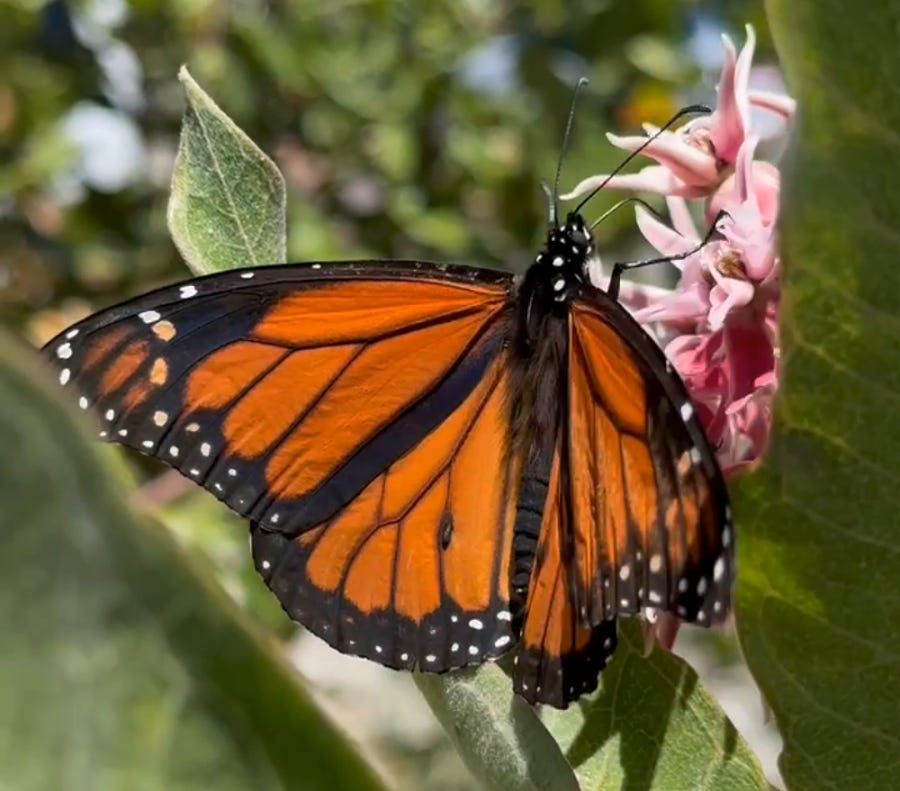
As part of the natural ecosystem, they also serve as a food source for birds. Birds will eat butterflies both in the larval form, as caterpillars, and in the adult form, as butterflies. In designing a backyard ecosystem garden, we keep this natural cycle of life at the forefront of our minds. All of our gardens are a combination of habitats for butterflies and songbirds adjacent to each other. The edge between these two habitat areas is where the greatest ecological diversity lives
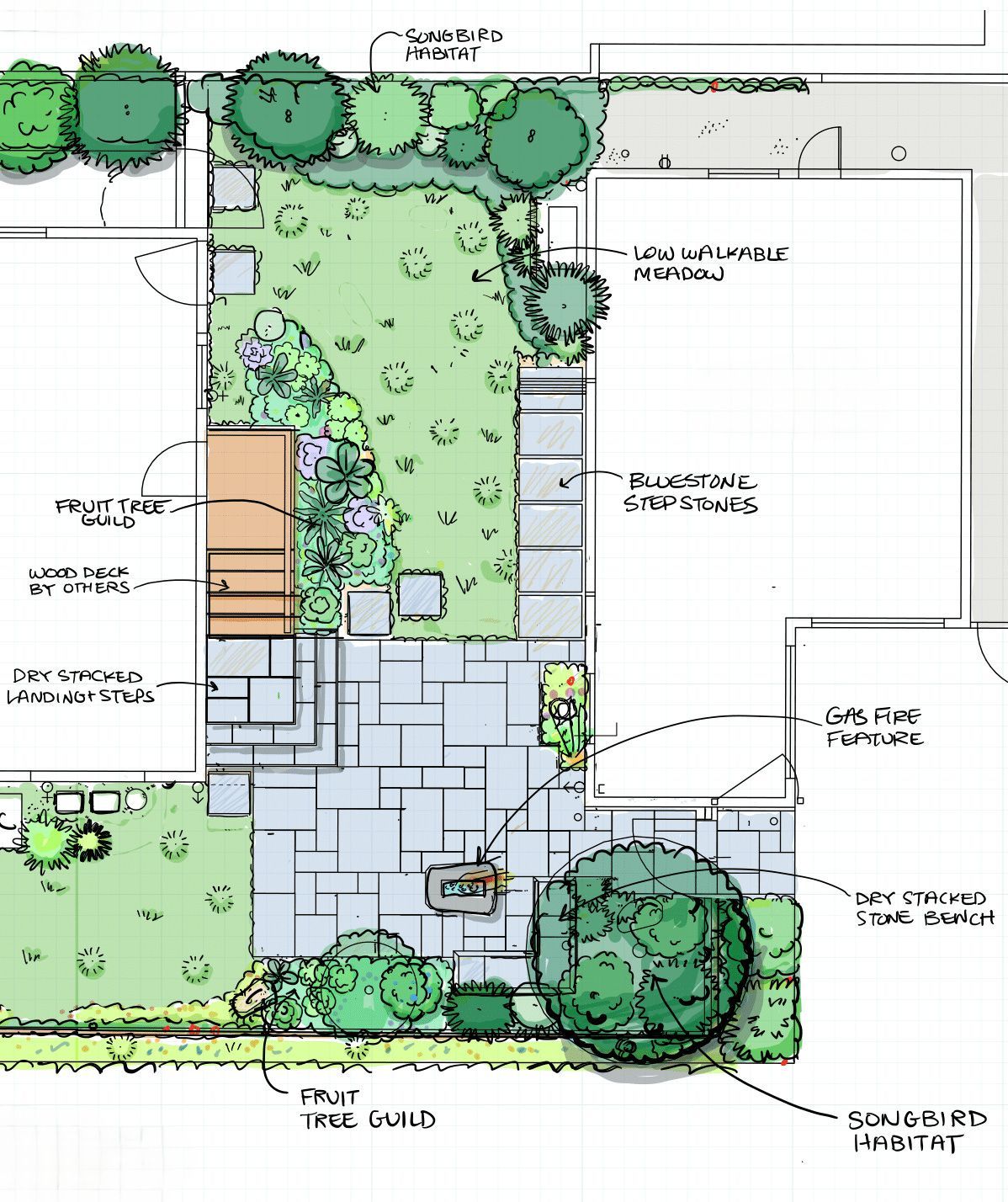
As part of the natural ecosystem, they also serve as a food source for birds. Birds will eat butterflies both in the larval form, as caterpillars, and in the adult form, as butterflies. In designing a backyard ecosystem garden, we keep this natural cycle of life at the forefront of our minds. All of our gardens are a combination of habitats for butterflies and songbirds adjacent to each other. The edge between these two habitat areas is where the greatest ecological diversity lives
Butterfly populations are in decline
Sadly, according to a recently published study (Edwards et al. 2025), butterfly populations overall have declined by 20% since 2020.
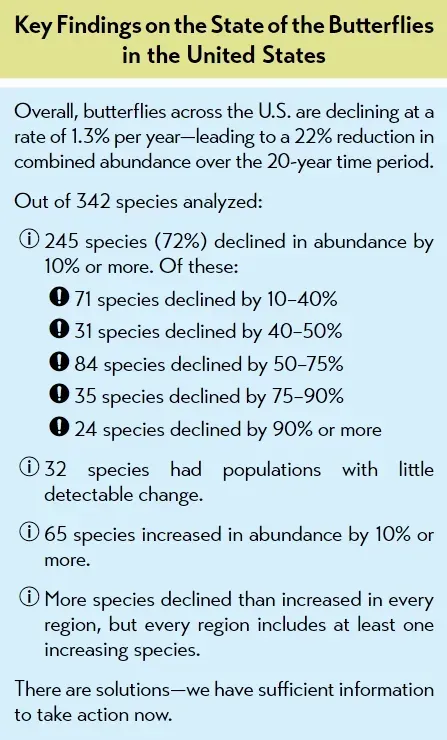
Habitat loss, pesticide use, and climate change have all contributed to this decline. Declining butterfly populations carry the ecological consequence of losing the essential ways that butterflies contribute to the ecosystem.
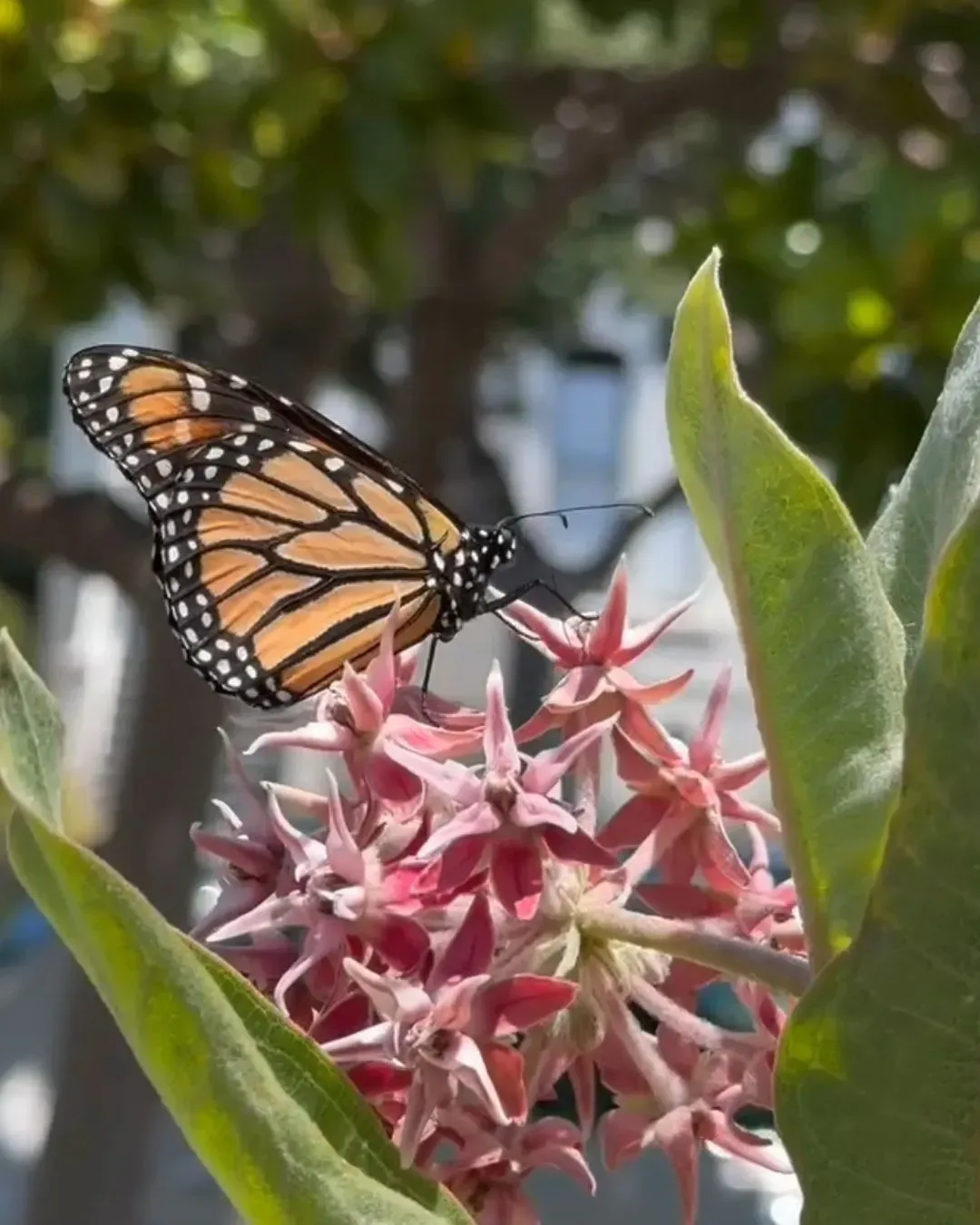
Indicator Species
As an indicator species, butterflies highlight for us the overall health of our ecosystems. Indicator species are organisms in an ecosystem that demonstrate to us changes in the environment. As butterflies are so visible to us, their decline is noticeable. Even if you did not have the data (Xerces Society), you will probably have noticed that you used to see a lot of butterflies in areas where you now just see a few. The health of an indicator species, such as butterflies, reveals the state of health for whole ecosystems. Smaller and less noticeable pollinators require similar conditions as butterflies to be healthy, so what happens to butterflies will also happen to countless species. With the decline of butterflies, we are becoming more aware of the declining health of our ecosystems.
Habitat Loss
Not only have we lost vast amounts of habitat over the past 20 years due to development, but what remains has also been fragmented. Cities and towns split and divide habitat corridors, leaving gouges in the landscape. This requires butterflies to fly longer distances to increase their populations and spread through the landscape. The consequence is that fragmented habitats keep butterflies isolated and their populations low.

This photo illustrates the fragmentation of habitat in the San Francisco Bay Area. Development has literally descended right down from the hills and into the bay, essentially eliminating the possibility of butterflies and any wildlife to seek refuge in a body of water that once held an incredible diversity of species. Note the long rectangular green area. This is Golden Gate Park. Any wildlife living in that area is limited in its ability to spread its range to the surrounding developed areas. Although it appears green, it is a heavily used urban park, and the impact that humans have on the ecosystem is heavy.. Even so, the park is host to many more wildlife species than can exist outside that range.
Pesticide Use
If you want to have a healthy garden, don’t spray chemicals on it. It shocks me how many times I am in a friend’s garden, and sometimes in a new client’s garden, and I see a product like Neem. Neem is marketed as a product approved for IPM standards and considered “safe” for backyard gardeners. Products that kill are never safe in your garden. IPM standards do not take an entire ecosystem into account, and sometimes allow harmful chemicals as a last resort. Even though it is touted as better or safer than simply using broad-spectrum pesticides, IPM is a system that still reverts to products that are toxic and that kill. Although Neem can kill some of your garden pests, it is designed to kill all insects, including the many more beneficial species, including butterfly caterpillars. Anytime you are tempted to grab a product, especially Neem or anything with neonicotinoids off the garden store counter, think again. Turn around and go purchase more pollinator-friendly plants. Plant a lot of different pollinator-friendly plants all together, like you would see in nature. By using an ecosystems approach to solving pest problems in your garden and creating a garden that more closely replicates natural areas, with a diversity of plants, you will eliminate the need to purchase any more products. A diverse array of plants attracts a diverse range of insects. In this way, garden pest populations are kept in check because there are always predators for the pests living in your garden.
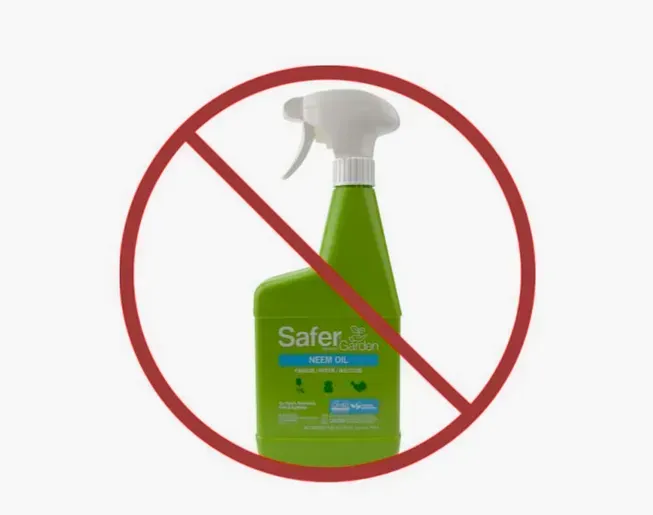
Climate Change
A warmer planet changes the ecosystems in which we all live. Creatures, such as butterflies, are sensitive to warming. Each individual species has a preference for the temperatures into which they have evolved. Butterflies are heat and cold-sensitive. They are all adapted to certain weather conditions. When the temperatures rise, the plant makeup of an area will change. These changes force butterflies out of areas that they have adapted to. Sometimes they can adapt, and sometimes they cannot adapt. The best thing each of us can do to help control climate change is to keep a garden. Even a small one. Green plants cool the planet. Read our article on green here. Adding a butterfly meadow to your garden not only has the benefit of increasing biodiversity, but it also will help to keep the planet cooler.
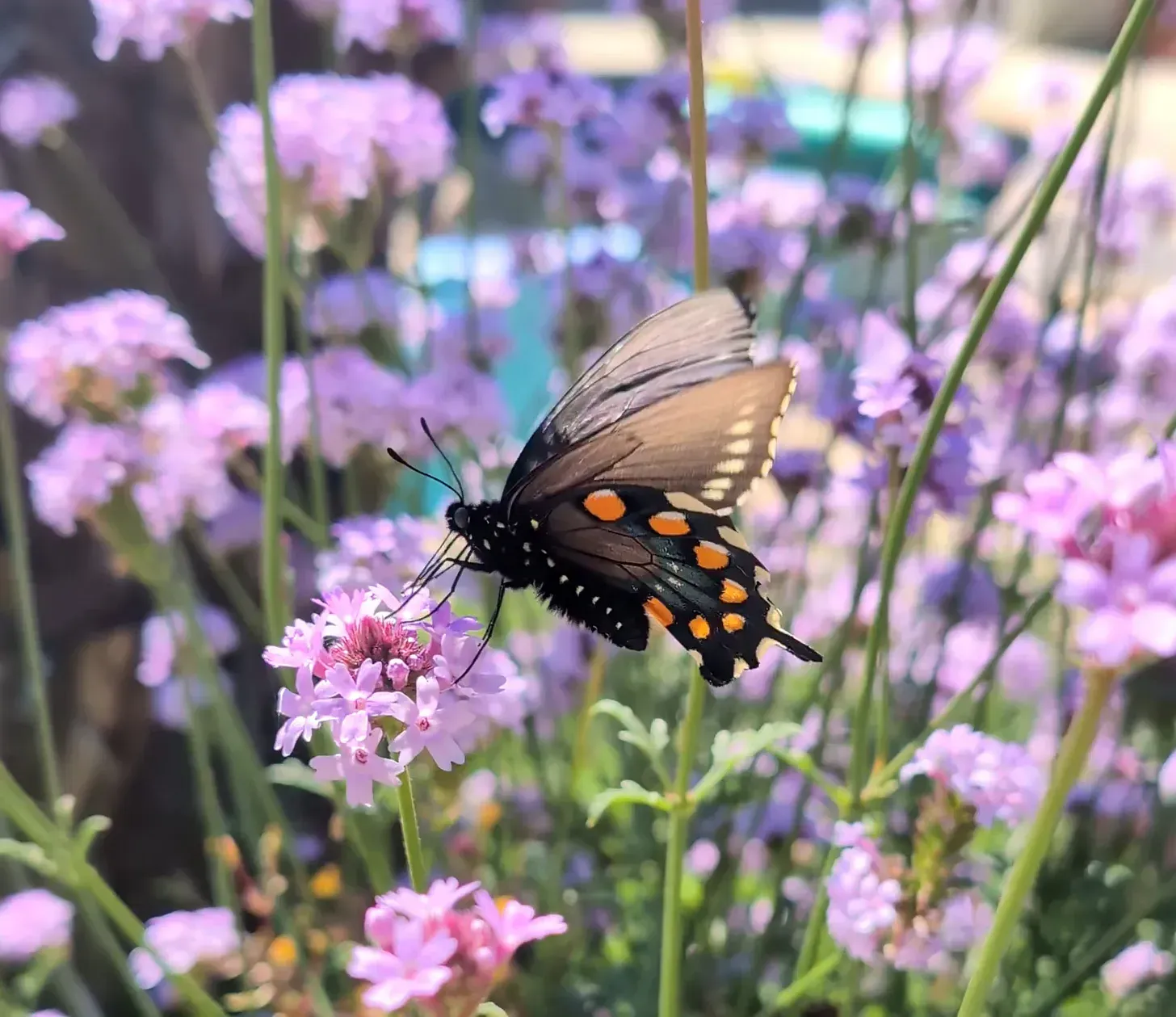
What can we do
A warmer planet changes the ecosystems in which we all live. Creatures, such as butterflies, are sensitive to warming. Each individual species has a preference for the temperatures into which they have evolved. Butterflies are heat and cold-sensitive. They are all adapted to certain weather conditions. When the temperatures rise, the plant makeup of an area will change. These changes force butterflies out of areas that they have adapted to. Sometimes they can adapt, and sometimes they cannot adapt. The best thing each of us can do to help control climate change is to keep a garden. Even a small one. Green plants cool the planet. Read our article on green here. Adding a butterfly meadow to your garden not only has the benefit of increasing biodiversity, but it also will help to keep the planet cooler.
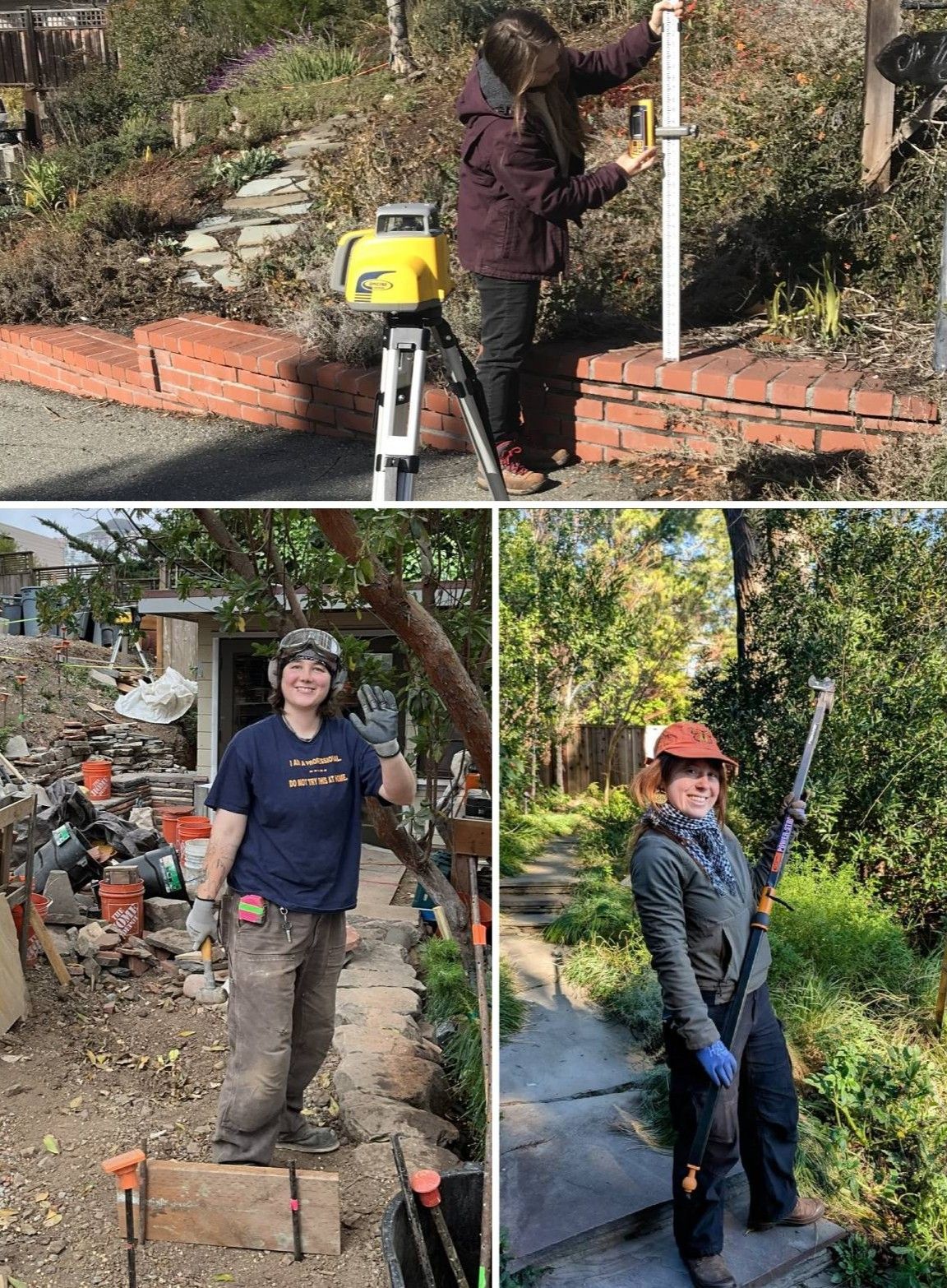
That is why Mariposa Gardening & Design Cooperative, Inc. was created. The planet needed a company that is dedicated to the preservation of butterflies. And the good news is that it does not take too much effort to make a positive impact on bringing butterfly populations back. While there is an overall decline in butterfly populations, some butterflies are actually on the rise. Take the Pipevine swallowtail, for example. This butterfly had drastically dropped in population numbers over the years. However, in the Xerces Society report, we can see that the Pipevine Swallowtail has increased its population by 45% and the Gulf Fritillary by over 5,000%. This has largely been credited to the work of backyard gardeners. In fact, several butterflies common in urban areas have seen a rise in populations since 2000, though many more are in decline.
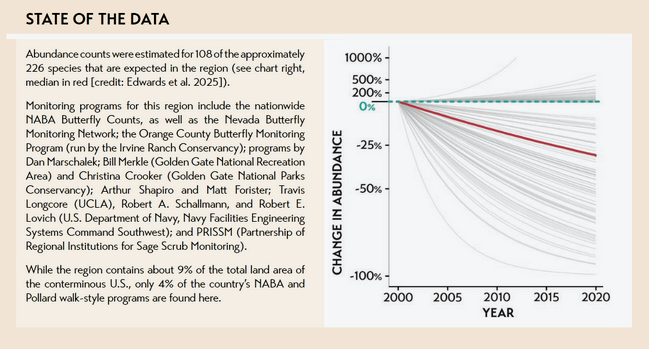
Butterflies are adaptable. Although their populations have declined, they can also be restored. Fractured habitat can be stitched together, one garden at a time, creating a chain that will support increased butterfly populations. Over the past 20 years, Mariposa has continued to build habitat gardens, one at a time, all around the San Francisco Bay. As many of our clients can attest, they start to see butterflies in their garden as soon as the plants are delivered, and even before they are planted. The butterflies are there, and they only need more places from which they can gather nectar, lay their eggs, and go into chrysalis. They simply need your help.
Pro tips to boost butterflies!
Plant pollinator and
butterfly-friendly plants!
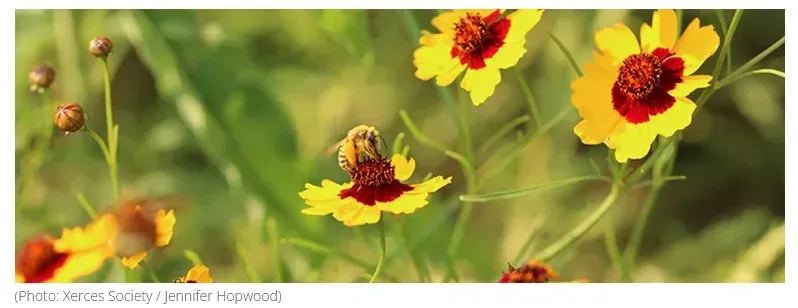
- This includes both host plants and nectar plants.
- Plant a diverse array of plants
- Choose plants that will bloom at different times of the year
- Most nurseries will indicate which plants are either native or good for pollinators
Plant native grasses!
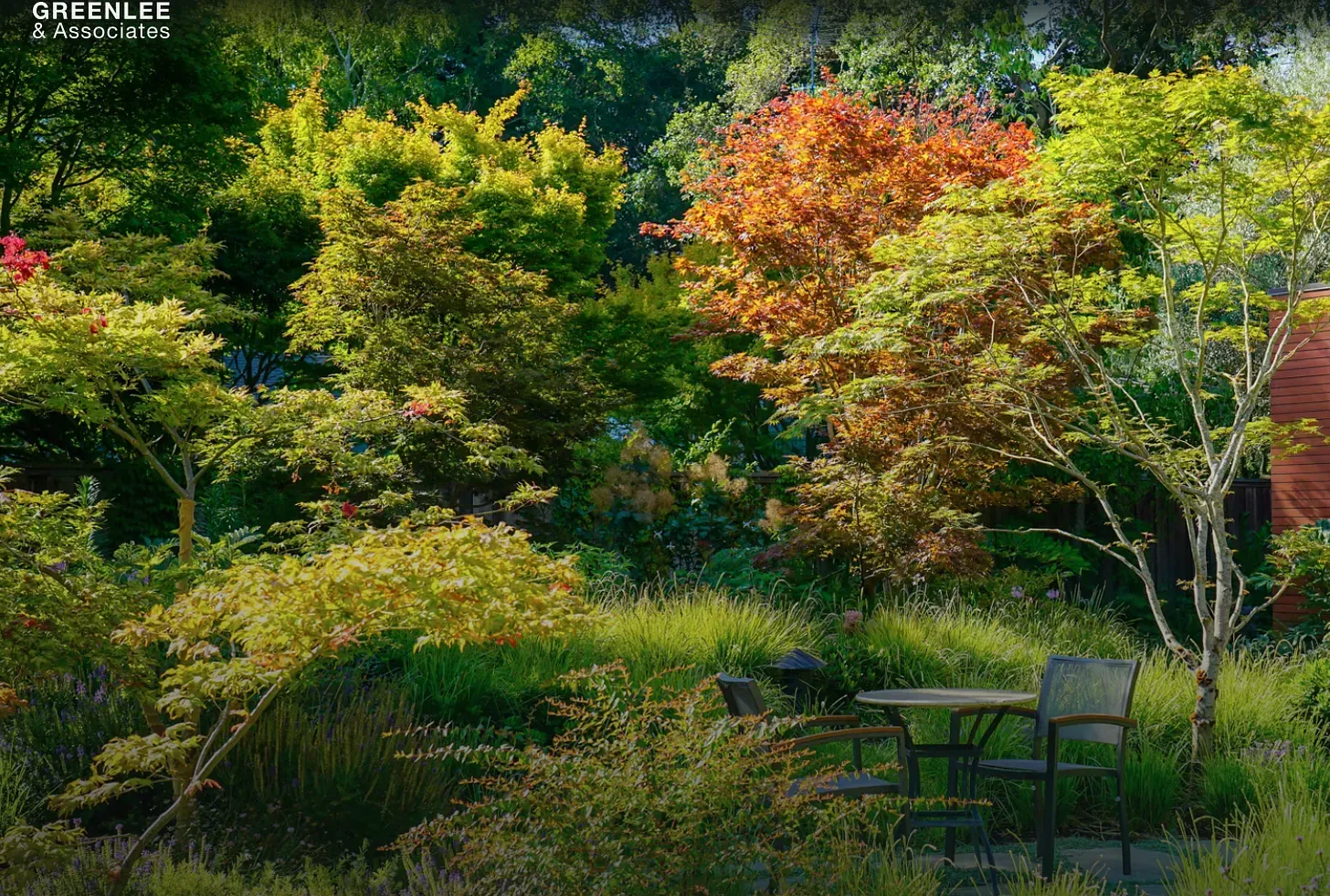
- Native grasses provide shelter for not only butterflies, but a whole host of beneficial insects and pollinators.
- Keep your grasses long through the winter. Many insects, as well as eggs of butterflies and pollinators, will overwinter down inside of the protected area where the grasses meet the soil. These shelters will protect small insects and eggs from getting too cold as well as being washed away in the rain. We wait until the winter rains have mostly subsided before we do a hard cut on our grasses.
Keep your garden well-hydrated!
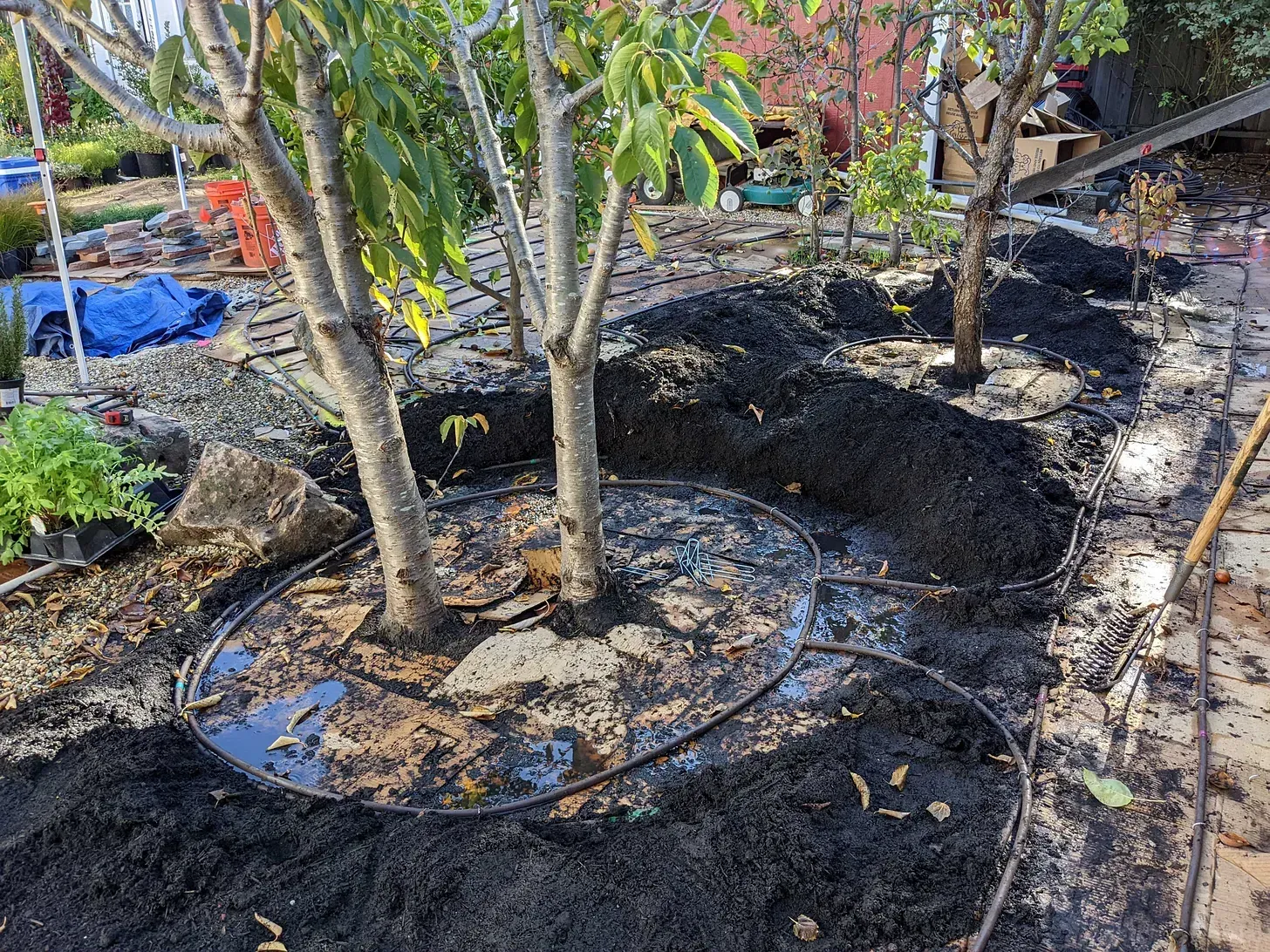
Gardens that have a consistent moisture level, not too wet, and not too dry, have healthy plants that will thrive and attract butterflies. Butterflies (and all pollinators) prefer to visit plants that are properly hydrated over dried-out ones. If the plant is healthier, the nectar is better for them, juicer, and tastes better. Even though it seems to make sense to conserve water in your garden, dry gardens diminish butterfly populations. You don’t need to waste water to make it have a positive effect on the planet. You can be lean with the water, but keep it consistent.
Mind your clippings!
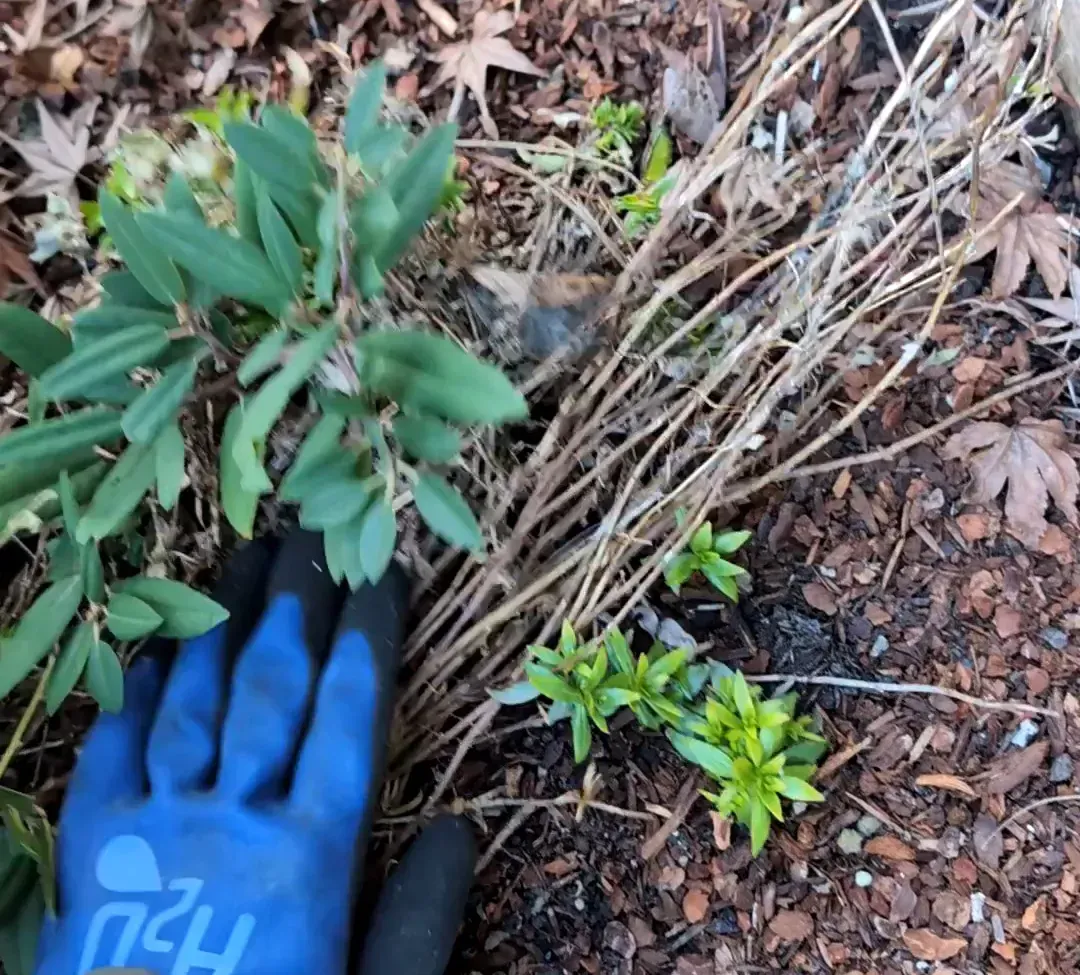
Many host plants, such as passionvine, milkweed, and mallow, are a food source for caterpillars throughout the year. As you clip these plants, look for eggs and caterpillars on the underside of leaves. Even if you don’t find any, instead of hauling your trimmings away, carefully tuck them underneath the host plants, as if they are a mulch. This will enable caterpillars to crawl back into the plant to feed and complete their life cycle.
If we all took the effort to tend to our gardens as if we were stewarding the land, we would successfully change the fate of butterflies. Butterfly gardens not only contribute to the health of our ecosystems, but to our own health as well. Each time we can observe a butterfly, we are given a moment to pause and feel our connection to the natural world. This brief moment of peace, when multiplied around the world, can help to create a better sense of harmony and respect for each other.
